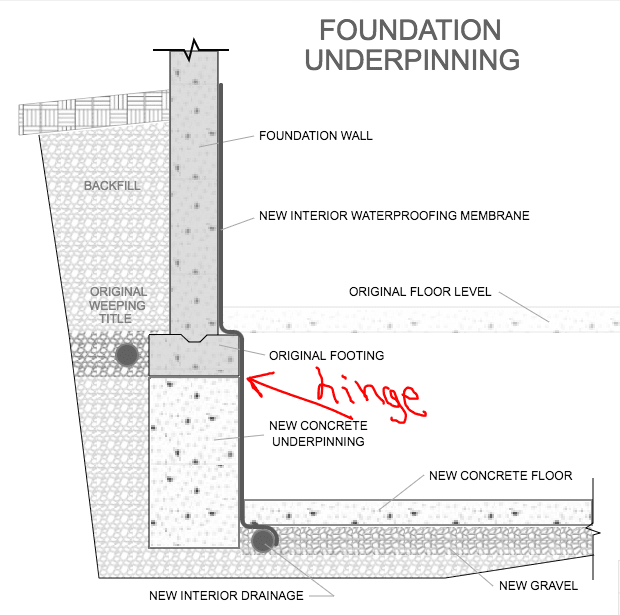jandlo
Structural
- Feb 28, 2006
- 33
This is sort of a general question about underpinning. I see companies advertising underpinning like the detail shown below. How do they connect the underpin to the existing foundation to resist the moment? In general I'm curious how engineers detail similar scenarios so the new wall retains the soil.


